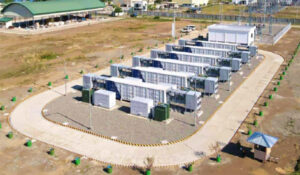By John Victor D. Ordoñez, Reporter
THE Department of Energy (DoE) said on Thursday that battery technology is evolving fast enough to make its 2050 renewable energy (RE) targets feasible.
“We are trying to encourage more battery systems companies and we hope it will attract better technology,” Energy Undersecretary Sharon S. Garin told a Senate energy committee hearing looking into a bill seeking to develop the midstream natural gas industry.
“We do recognize that there are still limitations (in RE development); we do believe that technology will improve fast enough to catch up by 2050,” she added.
The Philippines is seeking to raise the share of RE in the energy mix from 22% to 35% by 2030 and to 50% by 2040.
She was responding to Senator Sherwin T. Gatchalian’s question on the agency’s efforts to develop more RE projects.
Energy Undersecretary Rowena Cristina L. Guevara has said the DoE plans to hold two green energy auctions before the end of the year, offering geothermal, pump-storage hydro and impounding hydro projects.
The Philippines is about to lose its only indigenous source of gas, the Malampaya gas field. Malampaya is expected to run out of easily recoverable gas using current techniques by 2027.
Legislators have been pushing for measures to ease the process of importing liquefied natural gas (LNG) as Malampaya dwindles.
At the same hearing, Prime Energy Resources Development B.V. Managing Director and General Manager Donnabel Kuizon Cruz pushed for more exploration. She said Philippine exploration activity is lagging the rest of Southeast Asia.
“Indigenous gas ticks all the boxes as a transition fuel, consistently delivering stable prices and reliable fuel supply for generation,” she said.
Center for Energy, Environment and Development, Inc. Deputy Head of Legal Isabel Patricia C. Soresca cited the threat of greater LNG use to coral reef ecosystems, mangroves and water quality.
“Construction of fossil gas-fired plants entails land reclamation and other infrastructure, which will result in sedimentation or the increase of dirt and soil in the water,” she said.
“This damages and hinders the growth and proliferation of coral.”
